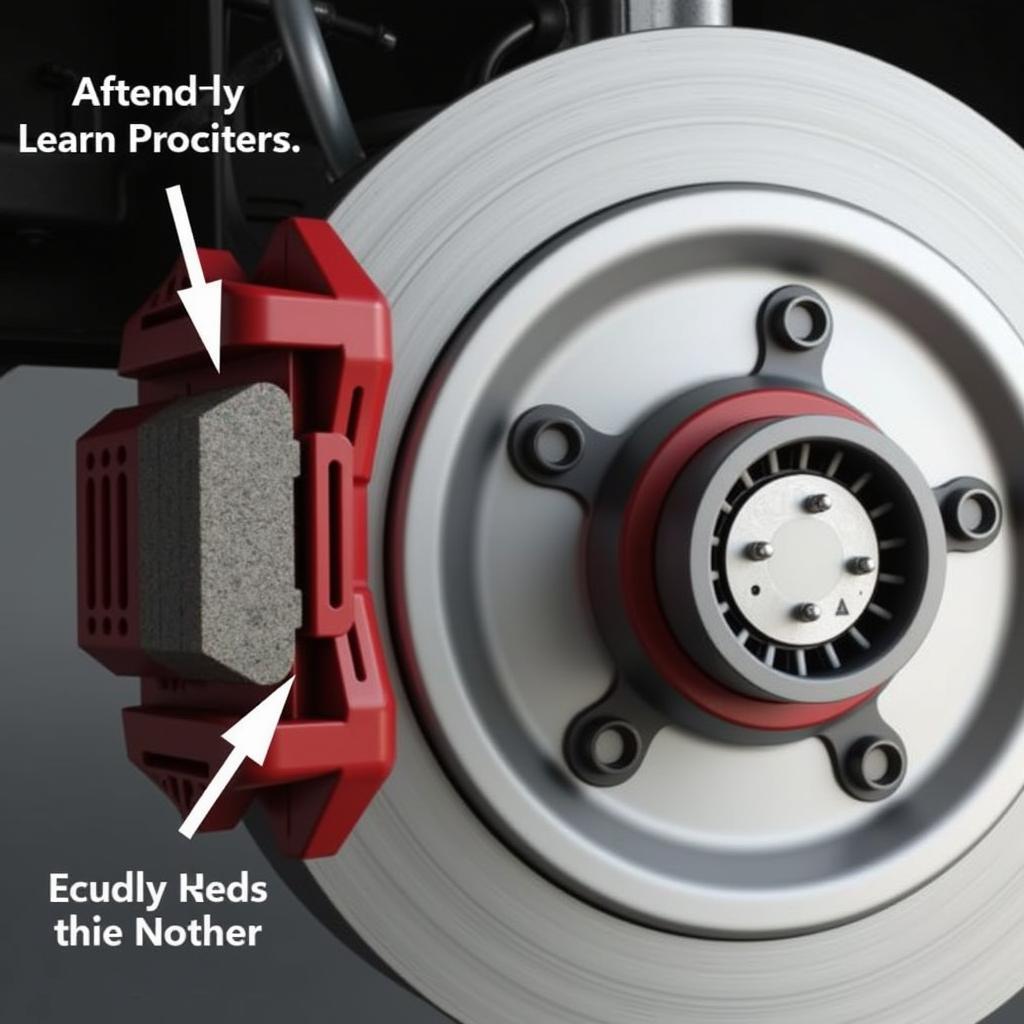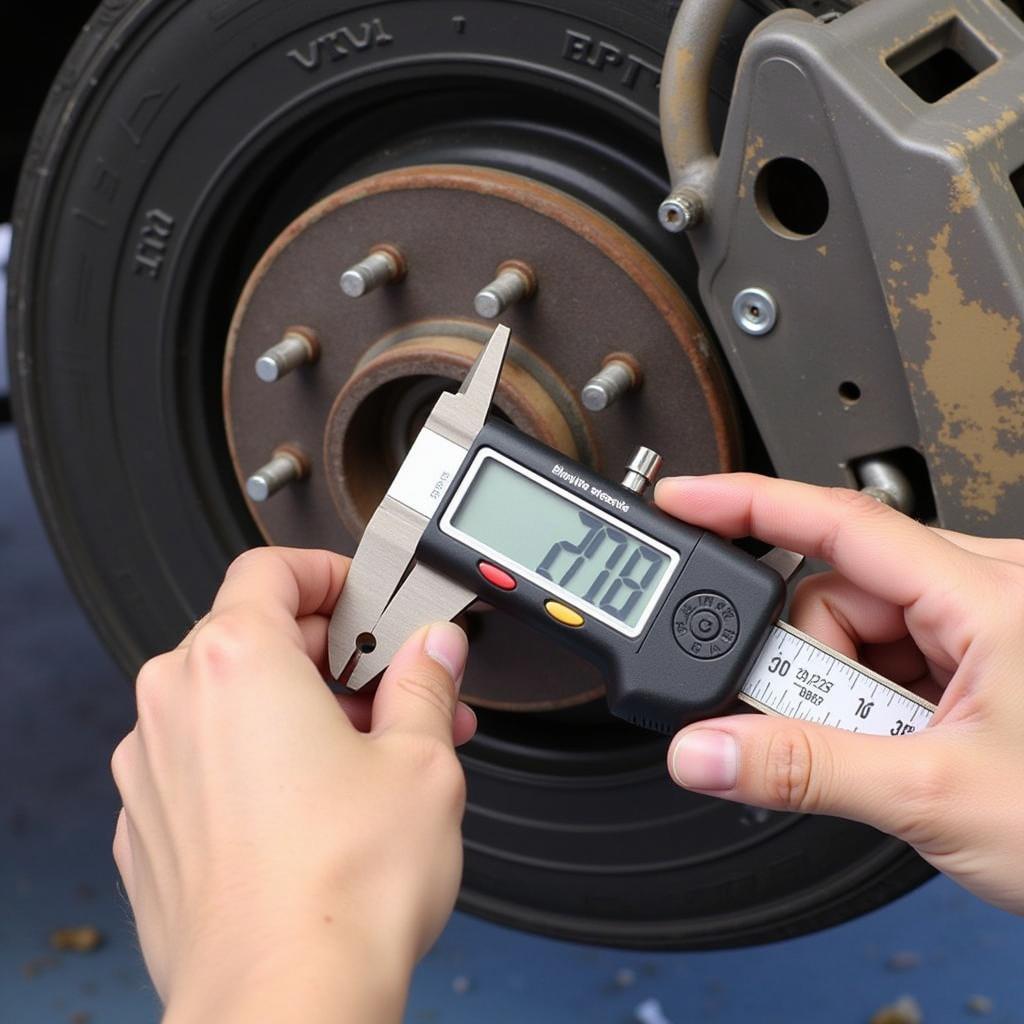That annoying little light on your dashboard – the faulty brake pad warning light – is more than just an annoyance. It’s a critical safety indicator, screaming for your attention. This guide will delve into everything you need to know about this warning light, from its causes and solutions to preventative measures and remote diagnostic options. Learn what this warning light means, why you shouldn’t ignore it, and how to address the underlying issue.
Understanding the Faulty Brake Pad Warning Light
The brake pad warning light is part of your car’s braking system monitoring. It usually illuminates when your brake pads have worn down to a point where they need replacing. This light is triggered by a small sensor embedded within the brake pad material. As the brake pad wears, this sensor eventually comes into contact with the brake rotor, completing a circuit and illuminating the warning light. Ignoring this warning can lead to significant damage to your rotors, calipers, and other braking components. See our article on the passat brake warning light flashing for a specific example.
What Does the Light Mean?
Simply put, the illuminated warning light signals that your brake pads require immediate attention. While it typically indicates worn brake pads, it can also be a sign of other issues within the braking system, such as low brake fluid or a faulty sensor.
“The brake pad warning light is your car’s way of saying, ‘Hey, I need some brake love!'” says John Davis, a seasoned automotive technician with over 20 years of experience.
 Brake Pad Wear Sensor
Brake Pad Wear Sensor
Why You Shouldn’t Ignore the Warning Light
Ignoring the faulty brake pad warning light is like ignoring a ticking time bomb. Continuing to drive with worn brake pads not only compromises your safety but also significantly increases your stopping distance. This can lead to accidents, especially in emergency situations. Additionally, driving with worn pads can damage your brake rotors, leading to costly repairs down the line. For more information on general brake warning lights, check out brake warning indicator light.
Troubleshooting the Faulty Brake Pad Warning Light
While worn brake pads are the most common culprit, other factors can also trigger the warning light. Here’s a breakdown of potential causes and solutions:
-
Worn Brake Pads: This is the most obvious cause. Replace the brake pads immediately.
-
Low Brake Fluid: Low brake fluid can also trigger the warning light. Check your brake fluid reservoir and top it off if necessary. However, consistently low brake fluid may indicate a leak, requiring professional attention.
-
Faulty Brake Pad Sensor: The sensor itself can malfunction. This requires a replacement sensor.
-
Damaged Wiring: Damaged wiring to the sensor can also cause issues. Inspect the wiring for any signs of damage or corrosion.
Diagnosing the Issue
A proper diagnosis is crucial for effectively addressing the problem. Visual inspection of the brake pads is the first step. If they appear thin, replacement is likely necessary. Checking the brake fluid level is also essential. If the level is low, identify and address the cause of the leak. You may need specialized diagnostic tools to pinpoint a faulty sensor or wiring issue. Modern vehicles often require software-based diagnostics. Remote diagnostic services, like those offered by specialized automotive technicians, can help identify these complex problems without needing a physical visit to a repair shop. Learn more about how remote diagnostics can help with specific makes and models, such as the tsx atb brake warning light.
 Checking Brake Pad Thickness
Checking Brake Pad Thickness
Preventative Measures
Prevention is always better than cure. Regular brake inspections, typically every 12,000 miles, are vital to catching potential issues early. This includes checking brake pad thickness, rotor condition, and brake fluid levels. “Regular maintenance is key to preventing costly brake repairs,” says Maria Sanchez, a certified automotive engineer specializing in brake systems. “A small investment in maintenance can save you a lot of headaches down the road.”
Resetting the Warning Light
After addressing the underlying issue, the warning light may need to be manually reset. This can sometimes involve specific procedures depending on the vehicle’s make and model. For example, you can learn more about resetting the light on a Mini Cooper with our guide on mini one brake pad warning light reset. In some cases, diagnostic software or specialized tools might be necessary for resetting the light.
Conclusion
The faulty brake pad warning light is a crucial safety feature. Ignoring it can lead to costly repairs and potentially dangerous driving conditions. Addressing the underlying issue promptly is essential for maintaining the integrity of your braking system and ensuring your safety on the road. Regular maintenance and timely repairs are crucial for preventing future problems with your brakes and ensuring the longevity of your vehicle. Consider scheduling a brake inspection today. And for older vehicles like a 1995 Chevy truck, understanding the warning lights is just as important – see our guide on 1995 chevy truck brake warning light.


